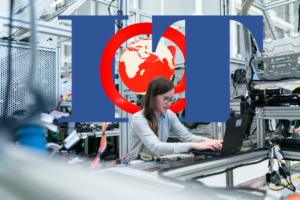We are reading a lot more about the Internet of Things (IoT) these days. Cisco calls the IoT the “Internet of Everything” and General Electric prefers the term the “Industrial Internet,” but all of these terms basically refer to a network of sensors that facilitates machine-to-machine (M2M) communication. Pundits agree that the IoT will dwarf the Internet and the World Wide Web that humans use to connect to one another. The IoT could literally change how the world operates. “Massive amounts of data from sensors, wearable devices, and other technologies are creating new and exciting opportunities to make better business decisions in real time,” writes Mike Kavis (@madgreek65), Vice President and Principal Architect for Cloud Technology Partners. “However, harvesting all of this data is only half of the equation. Making the data actionable is where real value lies.” [“Making Sense of IoT Data With Machine Learning Technologies,” Forbes, 4 September 2014] Kavis makes an important point. Just connecting a bunch of things together doesn’t really change the world. The IoT only becomes revolutionary when it is complemented by Big Data analytics that allow you to do practical and meaningful things with the data that is generated. The IoT is not a novelty. In the decades ahead, it will be the engine that moves the industrial world forward; which is why GE prefers the term Industrial Internet.
In study entitled “Industrial Internet: Pushing the Boundaries of Minds and Machines,” Peter C. Evans and Marco Annunziata (@marcoannunziata), write, “The Industrial Internet brings together the advances of two transformative revolutions: the myriad machines, facilities, fleets and networks that arose from the Industrial Revolution, and the more recent powerful advances in computing, information and communication systems brought to the fore by the Internet Revolution.” [General Electric, 26 November 2012] They continue:
“Together these developments bring together three elements, which embody the essence of the Industrial Internet:
- Intelligent machines: New ways of connecting the world’s myriad of machines, facilities, fleets and networks with advanced sensors, controls and software applications.
- Advanced Analytics: Harnessing the power of physics-based analytics, predictive algorithms, automation and deep domain expertise in material science, electrical engineering and other key disciplines required to understand how machines and larger systems operate.
- People at work: Connecting people, whether they be at work in industrial facilities, offices, hospitals or on the move, at any time to support more intelligent design, operations, maintenance as well as higher quality service and safety.
Connecting and combining these elements offers new opportunities across firms and economies.”
Evans and Annunziata should be congratulated for including people in their description of the Industrial Internet. Too often, the IoT is described in such a way that it seems to exclude the human element. The fact remains, however, that intelligent machines (i.e., machines containing embedded sensors) are the heart and soul of the IoT. Evans and Annunziata write:
“The Industrial Internet starts with embedding sensors and other advanced instrumentation in an array of machines from the simple to the highly complex. This allows the collection and analysis of an enormous amount of data, which can be used to improve machine performance, and inevitably the efficiency of the systems and networks that link them. Even the data itself can become ‘intelligent,’ instantly knowing which users it needs to reach.”
The “intelligent” part of the system also involves machine learning. Kavis explains, “Traditionally, companies have mined data to look for trends and opportunities. In the world of IoT, searching for nuggets of information in petabyte sized databases is the equivalent of trying to find a needle in a haystack. To help extract value quickly and effectively, companies are turning to machine learning technologies, like big data technologies.” Machine learning is important because the IoT is predicted to connect billions of sensors and people are going to need help understanding what the data being generated from all those sensors mean. How big will the IoT become? Brian Proffitt (@TheTechScribe) reports, “75 billion. That’s the holy-@$#! number of devices that Morgan Stanley has extrapolated from a Cisco report that details how many devices will be connected to the Internet of Things by 2020. That’s 9.4 devices for every one of the 8 billion people that’s expected to be around in seven years.” [“How Big The Internet Of Things Could Become,” readwrite, 30 September 2013] Proffitt continues:
“The ceiling is nowhere near being approached. Right now, the Morgan Stanley note estimates that there are potentially 200 devices for each person in the world that could be connected to Internet of Things. Economics and consolidation will most likely keep us from ever seeing that many devices connected to the Internet of Things, but the room for growth is still massive in these early days.”
Because of the massive amount of data that will be generated by these billions of devices, decision makers will need alerts that tell them when something important is happening so they can take action. Analysts simply won’t have the luxury of manually poring over reams of data trying to make sense of it all. In a previous article, Kavis concluded, “Large data volumes from [the] IoT will drive radical changes within today’s datacenters and will require new Big Data strategies within enterprises.” [“The Internet Of Things Will Radically Change Your Big Data Strategy,” Forbes, 26 June 2014] He explains:
“Due to a skills shortage and the need to constantly procure infrastructure to keep up with the amounts of incoming data, enterprises will start moving away from the DIY models towards PaaS, managed, and orchestrated solutions. The value of [the] IoT is in the data. The quicker enterprises can start analyzing their data the more business value they can derive. Vendors are stepping up to the plate to remove the complexity and risks of data ingestion and data management so that customers can focus on analytics. Watch this space closely. The winners will win big.”
Ron Callari (@roncallari), a social media strategist, agrees that the IoT will change many business models. “It’s the Internet of Everything (IoE) where the most effective data solutions — and the promise of Big Data — come to life,” he writes. “In the IoE, people, process, data, and things meet analytics, bringing intelligence to these connections, creating endless possibilities and solutions.” [“Beyond Big Data: IoE, Analytics Will Drive New Business Models,” CIO, 9 July 2014] As you can see, Callari agrees with Evans and Annunziata that people are going to play an important role in the machine-focused IoT. He concludes, “These technologies are poised to bear new business models only possible thanks to the confluence of Big Data, devices, and high-speed connections, and most importantly, people.” The reason that the hype over the IoT is heating up is because its potential to generate revenue and savings is enormous. Evans and Annunziata report:
“The benefits from this marriage of machines and analytics are multiple and significant. We estimate that the technical innovations of the Industrial Internet could find direct application in sectors accounting for more than $32.3 trillion in economic activity. As the global economy grows, the potential application of the Industrial Internet will expand as well. By 2025 it could be applicable to $82 trillion of output or approximately one half of the global economy.”
They go on to note that even small efficiencies across important industrial sectors can pay large dividends. How small? They claim an increase of efficiency as little as 1 percent can have significant economic impacts. They write, “In the commercial aviation industry alone, a one percent improvement in fuel savings would yield a savings of $30 billion over 15 years. Likewise, a one percent efficiency improvement in the global gas-fired power plant fleet could yield a $66 billion savings in fuel consumption.” When business executives see numbers like those, it’s understandable why they get excited about the potential of the Internet of Things.




